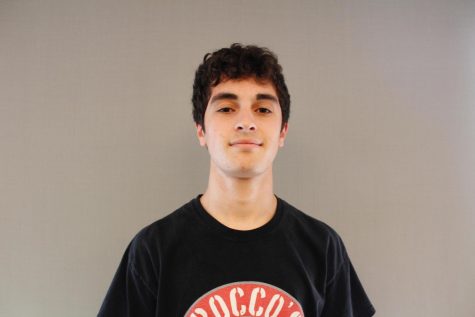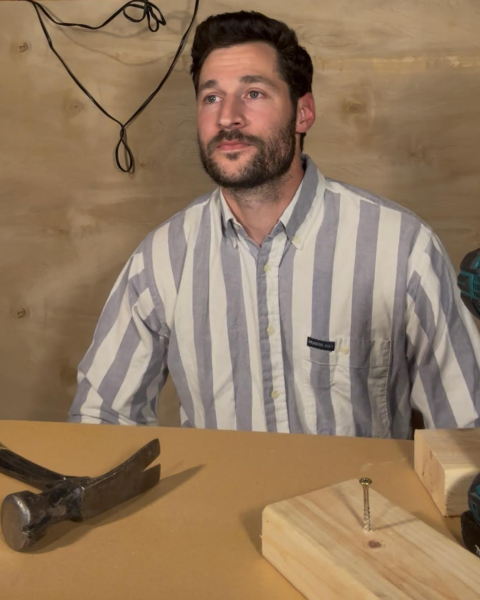The Parker Robotics Journey
Team Wins ‘Inspire Award’ And Makes State Championship
The Parker Robotics team advanced to the Illinois State Championship, held at Elgin Community College the weekend of February 25. The team, composed of 15 upper schoolers and two captains, tenth graders Nathan Satterfield and Olivia Garg, called 3507 Robotheosis, went into the weekend as the number one ranked team in the Chicago League of 24 teams, having placed in the Chicago League Championship, and won “The Inspire Award.” The team won three matches and lost three matches in the state qualifying rounds, ending its season.
Before this, though, at The Chicago League Championship at Benito Juarez Community Academy on February 18, Robotheosis lost two of the first three matches because of penalties, one of them very costly.
The fourth game was a matchup against Latin’s Animatores Romani, a win for Parker, 55 – 40. Robotheosis won the next match too, making the playoffs by going 3 – 2 in the qualifying matches.
In the playoffs, unlike the qualification matches where the alliances of two are random for each match, playoff alliances are chose by the top 4 ranked teams and contain three teams. Parker’s Robotheosis team was selected first by Crazy Eights, an independent robotics team and later by I am BOTman, from DeVry High School. An alliance means being able have your robot on the field at the same time as your partner team’s, and to both be scoring on the same goals.
Parker won their first match of the playoffs and it looked like their alliance would win the next ones. They lost the second match because a crucial part of the robot broke right as the team was trying to score the Cap Ball, a large yoga ball that needs to be lifted six feet in the air in order to be scored. Entering the final match of the semi-finals, everyone had a different thought in mind. “It was kind of like a rollercoaster,” sophomore Cole Rodgers, who is now in his fifth year of competitive robotics, said. In that third match, after fixing the component that broke in match two, Robotheosis lost in a tough match.
Teams are judged not only on placing in the match, but on two other components: an engineering presentation and an engineering notebook. At the beginning of the event, each team gives a presentation to a pair of judges. Teams talk to the judges about their robot design, what is unique about their design and they talk to the judges about community outreach the team does.
The engineering notebook that the team turns inis a large book documenting all of the steps the team has taken throughout the year, information about the team members, and just about anything else that is relevant.
The Parker Robotics team circled back to the bleachers after their last match, frustrated by having come so close to winning on the field. The team cheered and watched during the finals matches and then waited for the highly coveted awards presented during the awards ceremony.
The team had been eyeing the prestigious Inspire Award, and to their delight, they won it. “This year we have a better operating robot and we clearly have a better engineering notebook,” Mike Johnson a team mentor said,” “and so that was reflected in better operating results, creating results in the league championship, and us winning the Inspire Award.”
The Inspire Award is “given to the team that is a strong ambassador for FIRST programs, and a role model FTC team. This team is a top contender for many other judged awards and is a gracious competitor.” Winning the Inspire Award meant the team got to go to the state tournament the next weekend.
Robotheosis finished 16th out of the 36 teams, hoping to get picked as one of the three teams in the four allied groups for the playoffs, but missed the chance.
In robotics, a good team dynamic is crucial due to complexity and challenges of building an excellent robot. “We all try to work as a team and set our own goals and accomplish them one by one,” senior Vlado Vojdanoski, who is a first year member of the robotics team, said. “There is a very good sense of cooperation, people are very welcoming, and we usually get things done in a very efficient manner.”
The goal in a robotics match is to score more than the other team, and there are many ways to score. A driver controls what the robot does during matches, guiding it to send smaller balls known as particles into the goals, and also maneuvering the robot to hit a button on the beacons on the side of the playing field. Beacons are worth 30 points in the starting 30 second-autonomous period, and 10 in the two-minute driver period.
“Autonomous” is the one period of time completely pre–programmed, not controlled manually. There are some other ways of scoring that are worth less points, such as knocking a capball off the platform in “autonomous,” parking your robot in certain places on the field, and raising the large capballs into the goals during the 30 second endgame.
Upper School Science teacher and Robotics Faculty advisor Aaron Lee explained the importance of accepting mistakes and changing things in robotics. Lee said, “We had about two thirds of our designs end up going out the window.”
Team Captain Nathan Satterfield and Sophomore has this to say about the season, “In my mind, this season was very successful, my one goal for the year was to win the Inspire Award and we did. To me, winning the Inspire Award was a sign that the work we are doing is good and that we are on the right path to be even more successful in future years. I look forward to next season and to our future success.”
If you would like to read more about the work of the robotics team this year, visit fwparker.org/robotics. If you would like to see the robots in person or would like the Robotics team to do a demonstration or give a talk you can contact the team captain Nathan Satterfield at [email protected]







